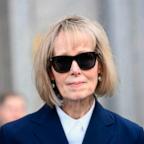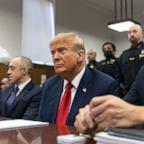How much longer will we see Federer, Serena and today's aging stars?
— -- Roger Federer in full flight, moving forward and taking balls ridiculously early ... Serena Williams cracking aces and fist-pumping herself into a state of agitation ... Rafael Nadal, still swashbuckling and capable of a leaping scissor-kick after all these years ... The Bryan Brothers, exhibiting their sometimes frightening "twin-ergy," careening, colliding with another chest bump.
Enjoy those sights in 2016, because soon enough those images of these players as viable contenders will be found only in your mind's eye. All of them will be in action Down Under at the Australian Open, which begins next Monday (on-air coverage begins Sunday night at 7 p.m. ET on ESPN2).
And with the 2016 Rio Olympics scheduled three weeks ahead of the US Open, there will be more intrigue than usual in one of the most anticipated tennis seasons in years.
"For so many luminous players, it will be their last Olympics," said Mary Carillo, an analyst for Tennis Channel and NBC. "That will cause even more blissful chaos. It will be fun watching them try to navigate through this."
Federer and Williams are both 34 and lead all active players with their respective Grand Slam singles titles. Federer's 17 is the all-time record and Serena's 21 are only three shy of Margaret Smith Court's women's mark.
Nadal, 29, already has caught Pete Sampras with 14 majors. Bob and Mike Bryan, who turn 38 in April, have won 16 Grand Slam doubles titles, more than any other team.
In terms of sustained excellence and depth, there might not have ever been a better era.
Australian players dominated the tours between 1953 and 1980, with five Aussies combining for 57 Grand Slam singles titles -- Margaret Court (24), Rod Laver (11), Ken Rosewall (eight), John Newcombe (seven) and Evonne Goolagong Cawley (seven).
But consider today's group. Counting only Williams, Federer, Nadal and Novak Djokovic, the combined total is 62 -- and it has come over a span of only 17 years, not 28.
"There's never been a better time to be a tennis fan," Carillo said. "Even though Serena doesn't have a true rival, like the men, it's a superlative time to be watching people play tennis."
Here's what we should expect from some of today's superstars, who may not be as prominent after 2016 -- a year in which everyone will be going for gold at the Rio Olympics.
Federer's aspirations
Federer made some modest news at the end of 2015.
"I've planned all of 2016," Federer announced on his Facebook page, "all the way through the Rio Olympics and beyond."
"Beyond" would suggest 2017, at the very least. The question: Can he sustain the momentum he built last year?
He plans to team up with fellow Swiss champion Martina Hingis for mixed doubles in Rio, prompting some to wonder if he's serious about winning his first Olympic gold in singles after going 0-for-4, or more interested in a victory lap.
Federer, who ranked as high as No. 2 in the world, finished the season at No. 3 after Andy Murray caught him at the year-end event in London. The Swiss star was 63-11 and won six titles, but only one was an ATP World Tour Masters 1000 (Cincinnati, where he beat Djokovic in the final).
While Djokovic reached all four major finals, Federer was next in line with two -- but he lost both to Djokovic, at Wimbledon and the US Open. He's 0-13 in majors since winning Wimbledon in 2012.
It's hard to imagine anyone could have envisioned Federer generating the type of season he did in 2015. There's little precedent for a player nearing his mid-30s winning at the rate Federer did a year ago. He'll be motivated to take it a step further in 2016, but after decompressing from the Olympics?
"Fed's already talking about playing into '17," ESPN analyst Brad Gilbert said. "He defied everything we thought could be possible from a player his age. He's healthy and motivated. I don't think anything is going to change with him for a couple of years."
Down time for Serena
Serena Williams shut down her season in September after losing against Roberta Vinci in the US Open semifinals, only three sets shy of the calendar Grand Slam.
The defeat to Vinci was abrupt and, by all accounts, hurt Serena deeply. Now, will Williams rally as she always has after calamities? Or will the nerves and health issues become a more permanent factor?
Serena has a long history of ambivalence with the game. Should injuries derail her year (and she's not off to a good start after dropping out of the Hopman Cup with a knee injury) or she loses focus, she could begin losing early much as she did two seasons ago.
As Carillo pointed out, Serena is without a rival or anyone approaching even a peer. Her head-to-head record against Maria Sharapova (18-2) and Victoria Azarenka (17-3) is terrific, and so far none of the younger players have made deep strides against her.
Simona Halep and Garbine Muguruza, ranked behind her at Nos. 2 and 3, are the likeliest candidates for success. Beyond that, Petra Kvitova, Angelique Kerber and Karolina Pliskova have the big games that could potentially give Serena trouble.
"If you told me that by the end of this season there would be three or four different Slam winners on the WTA, I wouldn't be surprised at all," Gilbert said. "The fact that Serena hasn't really played since the US Open -- that's a long time."
An encouraging trend is the resurgence of sister Venus, who turns 36 this spring and is back in the top 10. Any meeting between the two is must-watch tennis.
The takeaway: Don't take Serena's accomplishments for granted. It's just too difficult to predict how much more we'll see.
A new streak for Rafa?
Outside of that sacred red patch of clay in Paris, Rafael Nadal has never been easy to figure out.
He turns 30 during the second week of this year's French Open, and no one has any idea if he can pull it back together for an unprecedented 10th Roland Garros title in only 12 tries.
His physical style of play has always left him susceptible to injury; coming into 2015, Rafa had missed at least one Grand Slam event in five of nine previous seasons. And yet, going back to 2005, he had managed to win at least one major every single season.
Until 2015.
Rafa, coming back from a series of injuries, never got it going at the Slams. He failed to advance past the quarterfinals at the Aussie and French Opens, and had early exits in Wimbledon (second round) and New York (third round).
But slowly and surely, Rafa found some answers during the fall campaign. He reached the Beijing final, beat Stan Wawrinka in Shanghai and beat Murray in the round-robin portion of the year-end event in London. There was a pronounced pep in his step.
Can Nadal, whose state of mind has always been connected to his health, be well enough, confident enough to truly compete at the Slams, and make more history in Paris?
Mastering the motivation
Bob and Mike Bryan won a Grand Slam doubles title in 2005 (US Open), and proceeded to do it again at least once every year for the next decade.
They won the first three in 2013, but failed to capture the calendar-year Slam. In 2015, the Californians picked up three ATP World Tour Masters 1000 titles to add to their astonishing all-time wins total (109).
Their first-round loss at last year's US Open raised questions about the 37-year-old athletes' ability to dominate their sport. The good news? These days, doubles players can be productive into their 40s. The bad? Going forward, motivation tends to become an issue. This will be the Bryans' 19th professional season.
"They're 37," Gilbert said. "In doubles, that isn't that old. We need to keep in mind 2015 was their first slump in a dozen years."
They have talked about making Rio a goal -- let's see what they can do.
"I don't see why they're going to go away," Carillo said of all the aging players, including the Bryans. "Why would they? Venus has been pointing to Rio, but not in a way that suggests that will be it.
"The elite players today have long-term contracts. Jimmy Connors never made more money than when he reached the semifinals at the [1991] Open [at 39]. He wasn't going to quit. These guys aren't, either."




